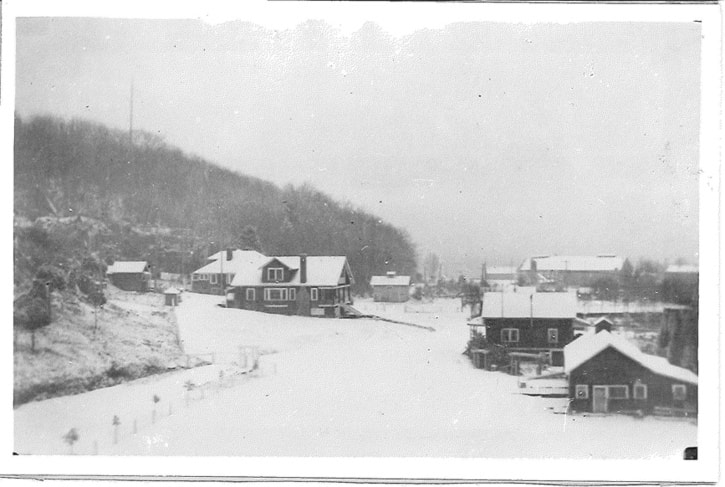It’s hard to imagine, sometimes, the impact one individual can have on a community’s history. Such a man was Duncan Irving Walker, superintendent for V I Power Company, whose home is shown centre left.
If you were standing near the (now abandoned and derelict) powerhouse, built in 1910, looking towards the sea, this scene would have met your eyes in the early 1920s. Though the road connection to Sooke may have been impassable through winter snowfall, the community was self-contained, with its own facilities and commissary.
When D I Walker was charged with the responsibility of tapping the resources of the Jordan Meadows and Bear Creek watersheds to create a hydro-electric system that could power the city of Victoria, he was equal to the job. He understood that in addition to the engineering skills needed to build the vast power system, with its dams and reservoirs, 5 1/4 mile flume, penstocks, powerhouse with its turbines, and tailrace, he needed to build a community where the workers would be happy.
By 1920 Jordan River had its own school, orchestra, tennis and badminton courts, basketball teams, a company guest house, operators’ homes and a thriving social life. The scope of the enterprise was such that 1,000 men were employed early on, requiring bunkhouses and cookhouses plus a small hospital.
A narrow-gauge railway was built to haul supplies to the higher elevations, where a sawmill and working camps were established, generally experiencing deep snow in winter. Drawn at first by horses, then a steam locomotive, the locomotives that came later were gas-powered.
Sharing the river valley during this time, Michigan Pacific Lumber, later Canadian Puget Sound Lumber and Timber Company, also employed hundreds of men. We have been told that the structure in the right rear was the roundhouse, housing locomotives, but we are uncertain whether this roundhouse was part of the extensive rail logging operations or was used by the power company.
D I Walker and his wife Katherine raised three sons and two daughters who also took an active part in community life. V I Power became B C Electric and later B C Hydro. In retirement, “D I” built the Jordan River Hotel in 1935. This enterprise remained a hub of the rapidly-changing community until it burned to the ground in 1984.
Elida Peers,
Historian
Sooke Region Museum
